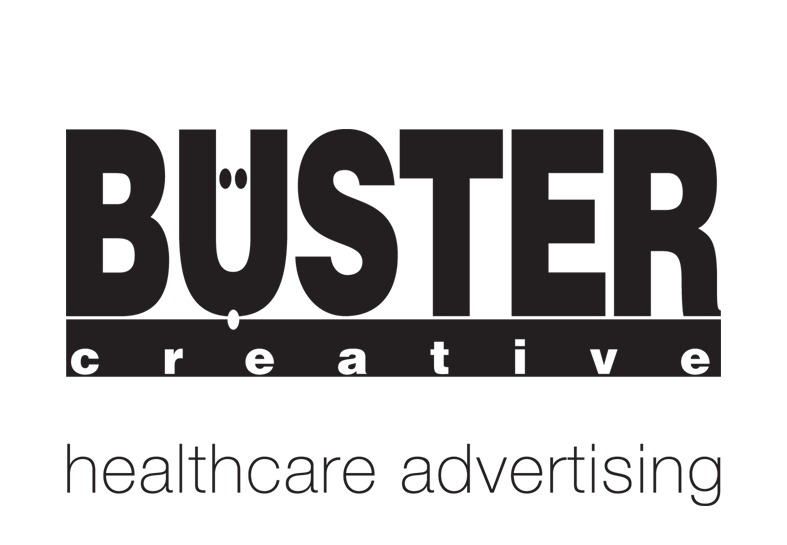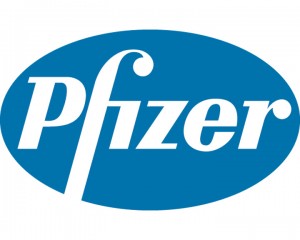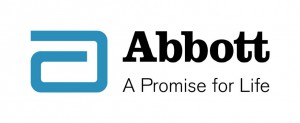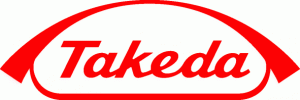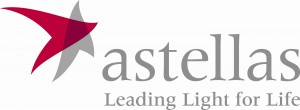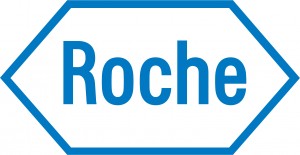What’s in a name? (pharmaceutically speaking)
While everyone’s been buzzing about Sophia, Mason and Jacob, three of 2011‘s top baby names, we’ve been following three other hot names making the news: Mondelez, Abbvie and Zoetis.
Over the past few months, several global companies have announced surprising new names for their corporate spinoffs. Kraft Foods chose to name its global snacks business Mondelez (a mashup of the words “world” and “delicious” in several romance languages). Then, Abbott Laboratories announced the name of its research-based pharmaceutical spinoff AbbVie (Abbott and the Latin root vi meaning “life”). And, most recently, drugmaker Pfizer unveiled its standalone animal health unit called Zoetis (a derivative of zoetic meaning “life”).
All this naming news got us to thinking about the origins of other company names, particularly within the pharmaceutical industry.
Pfizer, the world’s largest research-based pharmaceutical company, was originally named Charles Pfizer & Company. It was founded in 1849 by German-American cousins Charles Pfizer and Charles Erhart in Brooklyn, New York.
Novartis is a multinational pharmaceutical company based in Basel, Switzerland. It was created in 1996 from the merger of two Swiss companies Ciba-Geigy and Sandoz Laboratories. The name Novartis comes from the Latin expression novae artes, which means “new arts” or “new skills.”
AstraZeneca was formed in 1999 through the merger of two pharmaceutical companies: Astra AB of Sweden and Zeneca Group PLC of the United Kingdom. The name Zeneca was invented by branding consultancy Internbrand, who were instructed to create a name of no more than three syllables that is phonetically memorable and not offensive in other languages. It also had to start with the letter A or Z in to stay at the top or bottom of alphabetical listings.
Teva Pharmaceutical Industries. In 1901, the company known today as Teva (Hebrew for “nature”) started out in Jerusalem, Israel, as Salomon, Levin, and Elstein Ltd., a small business that distributed imported medications using mule trains and camel caravans throughout the land. In 1976, Eli Hurvitz, the son-in-law of Mr. Salomon, formally merged the pharmaceutical companies Teva, Assia, and Zori to form Teva Pharmaceutical Industries Ltd. Today, Teva is the largest generic drug manufacturer in the world.
Allergan was founded in 1948 by Gavin S. Herbert, a successful owner of a chain of drug stores in Los Angeles. Herbert worked with chemist Stanley Bly to develop an anti-allergy nose drop containing the antihistamine neoantergan. Merging the words “allergy” and “neoantergan,” they named the product Allergan Nasal Drops. In 1950, Hebert launched Allergan Pharmaceuticals based on that product.
Amgen, the world’s largest biotechnology company, was founded in Thousand Oaks, California, in 1980. The company pioneered the development of novel products based on advances in recombinant DNA and molecular biology, and launched the biotechnology industry’s first blockbuster medicines. The name Amgen comes from the company’s original name, Applied Molecular Genetics.
Gilead Sciences, a research-based biopharmaceutical company, was originally formed in 1987 under the name of “Oligogen, Inc.??? by H. DuBose Montgomery, co-founder of Menlo Ventures, and Michael L. Riordan, a 29 year-old medical doctor. The company origins trace back to a day in 1987 when Montogomery came down with a particularly bad cold — a virus. He wondered to himself why so few antivirals existed when so many antibiotics were in use. With the help of Riordan, they formed Gilead Sciences, which today focuses primarily on HIV/AIDS, liver disease and serious cardiovascular/metabolic and respiratory conditions. The company’s name is a reference to the Balm of Gilead, a tree resin that is mentioned in the Bible and is an ingredient found in cough syrups and first-aid salves.
Abbott Laboratories is a global, broad-based health company headquartered North Chicago, Illinois, just a five-minute drive from Buster Creative! The company was founded in 1888 as the Abbott Alkaloidal Company by Dr. Wallace C. Abbott, a Chicago physician who specialized in distilling alkaloid into solid form. Using the active – “alkaloid” – part of a medicinal plant, he formed tiny pills, called “dosimetric granules,” which provided a more accurate and effective dosing for his patients than other treatments available at the time.
Cephalon, an international biopharmaceutical company, was co-founded in 1987 by Dr. Frank Baldino, Jr., a pharmacologist and former scientist with the DuPont Company. The name Cephalon comes from the adjective “cephalic,” which means”pertaining to the head.” Cephalon was acquired by Teva Pharmaceuticals in 2011.
Bausch & Lomb, one of the oldest continually operating companies in the US today, traces its roots to 1853, when John Jacob Bausch, a German immigrant, set up a small optical goods store in Rochester, New York. When he need money to keep the business going, Bausch borrowed $60 from his friend Henry Lomb on the promise that if the business grew, he would make Lomb a full partner. The business did grow and together they formed the Bausch & Lomb Company, one of the world’s leading suppliers of eye health products.
Chugai Pharmaceutical Co. was founded as Chugai Shinyaku Co. by Juzo Ueno in Japan, 1925. Chugai is a subsidiary drug manufacturer Hoffmann-La Roche, which owns 52% of the company.
Takeda is the largest largest pharmaceutical company in Japan. It was founded in 1781 by Chobei Takeda who started a business selling traditional Japanese and Chinese medicines in Doshomachi, Osaka, the center of the medicine trade in Japan. Today, Takeda focuses metabolic disorders, gastroenterology, neurology, inflammation and oncology.
Astellas is a pharmaceutical company based in Japan. It was founded in 2005 from the merger of two other Japanese companies: Yamanouchi Yakuhin Shokai and Fujisawa Shoten. Astella is based on Latin “stella”, Greek “aster” and English “stellar,” all of which refer to stars. The name signifies the company’s aim to deliver hope for the future within the health and pharmaceutical categories.
Johnson & Johnson, a multinational medical devices and pharmaceutical company, was founded by not just two but three Johnsons: Robert Wood Johnson, James Wood Johnson and Edward Mead Johnson. After hearing a speech by antiseptic advocate Joseph Lister (the namesake of Listerine mouthwash), Robert Wood Johnson and his brothers started their company manufacturing sterile surgical supplies. Today, the Johnson & Johnson corporation has grown to more than 250 operating companies in 60 countries around the world.
Hoffmann-La Roche is a pharmaceuticals and diagnostics company headquartered in Basel, Switzerland. It was founded in 1896 by banker Fritz Hoffmann-La Roche, who was one of the first recognize that the industrial manufacture of standardized medicines would be a major advance in the fight against disease. Today, Roche employs over 80,000 people and sells its products in over 150 countries.
Other honorable mentions:
GlaxoSmithKline was formed in 2000 from the merger of Glaxo Wellcome and SmithKline Beecham. In 1906, the name Glaxo was trademarked for a dried milk produced by Joseph Nathan and Co. “Glaxo” is a euphonious word derived from “lactose.”
Sanofi was formed in 2004 when Sanofi-Synthélabo acquired Aventis, one of the world’s largest pharmaceutical companies.
Boehringer Ingelheim was founded in 1885 when Albert Boehringer purchased a small tartar factory in Ingelheim am Rhein, Germany. He initially employed 28 people to manufacture tartaric acid salts used by pharmacies and dyeing works. Demand for this product surged in the first few years as fizzy lemonade and baking powder become popular.
Merck was established in 1891 as the United States subsidiary of the German company now known as Merck KGaA. In 1688, Friedrich Jacob Merck purchased a drug store in Darmstadt, Germany, which was eventually passed on to Heinrich Emanuel Merck. Emanuel gradually built up a chemical-pharmaceutical factory, which laid the foundations for the company’s research operations.
Brisol-Myers Sqibb was formed in 1989 following the merger of Bristol-Myers and the Squibb Corporation. Squibb was founded in 1858 by a former U.S. Navy doctor, Edward Robinson Squibb, who later invented the Squibb pannier—a compact wooden medicine chest filled with medicines to treat battlefield casualties during the Civil War. Bristol-Myers was founded when two friends, William McLaren Bristol and John Ripley Myers, purchased a struggling drug manufacturing firm in Clinton, New York.
Eli Lilly and Company was founded 1876 by a pharmaceutical chemist named Eli Lilly. The company is headquartered in Indianapolis, Indiana, and has products marketed in 125 countries worldwide.
Bayer was founded as Bayer AG in Germany, 1863, by Friedrich Bayer and his partner, Johann Friedrich Weskott.
Bioen Idec was formed in 2003 by the merger of Biogen Inc. and IDEC Pharmaceuticals. Biogen was founded in Geneva in 1978 by some the world’s most accomplished biologists including Phillip Sharp of the Massachusetts Institute of Technology (MIT), Walter Gilbert of Harvard and Charles Weissmann of Zurich University.
Lundbeck was founded by Hans Lundbeck in 1915 solely as a trading company, supplying Danish people with everything from synthetic sugar to silver paper. During the early years, Lundbeck’s agents used everything from machinery for the manufacture of biscuits, confectionary and saccharin, to cinemetic and photographic paper and aluminum foil.
